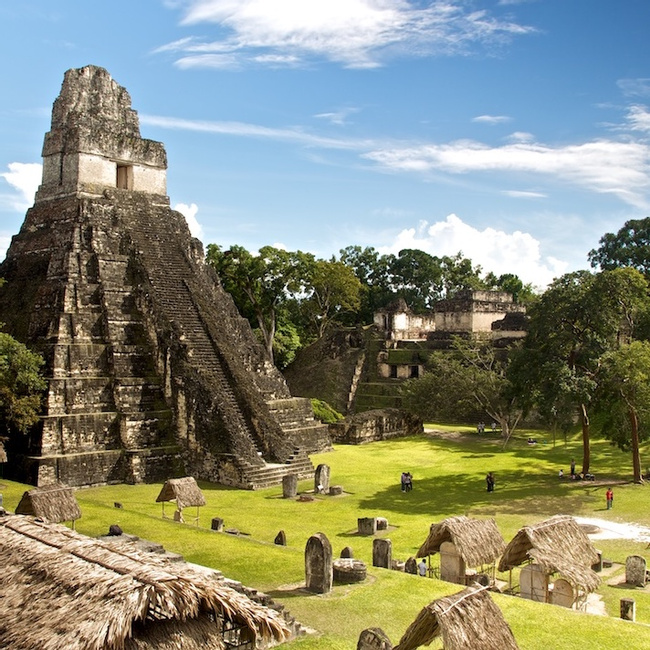- Travel Guides
Environmental Issues in Guatemala
Guatemala has a long way to go before the word “environmentalism” is a household term. It’s common to see garbage scattered alongside the road or being tossed out the windows by passengers in buses and cars. Environmental protection and environmental education is lacking in Guatemala; most Guatemalans prefer to chop down forests and plant crops rather than provide natural resources any real protection.

Even so, not all hope is lost. Guatemalan president Vinicio Cerezo Arévalo, who served from 1986 to 1991, helped get the government more invested in environmental matters. He established the massive Maya Biosphere Reserve and also pushed environmental legislation through congress. Other Guatemalan environmental activists have worked hard to bring better protection to Guatemala, and some have even lost their lives doing so — indeed, when you’re going up against powerful agricultural groups, cattle ranchers, and drug cartels, environmentalism can be downright dangerous. Though the country has a long way to go, slowly but surely, serious attention is being given to the creation and protection of nature reserves.
Deforestation
At one point in time, most of Guatemala was covered in forests. In fact, the Mayan-Toltec name for Guatemala means “land of the trees” — the nation's geography and climate made that possible, but to look at the landscape, one would never know that now. Ever since Mayan times, the forests have been cut down and used for other purposes. In 2001, 40 percent of the country was still forested; by 2005, it was down to 37 percent; in 2011, it was 33.7 percent. Indeed, between 1990 and 2010 Guatemala lost an average of 134,795 acres (54,550 ha), or 1.15 percent, of its forests per year.
The Caribbean lowlands have seen forests turned into banana plantations, while the Pacific slope forests have given way to coffee and sugarcane plantations. The Guatemalan highlands have been cultivated since Mayan times.
Much of this loss has occurred in Petén, where government incentives in response to a growing population have helped contribute to land grabs in Petén’s northern section. Indeed, the battle over Guatemala’s forests is being most actively waged in this department. The southern and central sections are almost completely deforested, which has led to declines in annual rainfall and longer/warmer dry seasons. The northern third of Petén is protected under the Maya Biosphere Reserve. Even so, the pressures continue to rise to develop this reserve, and illegal logging and land grabs still occur.
Forests are often cut down to make way for subsistence farming in a practice known as slash-and-burn agriculture. In this practice, forests are chopped down and burned; the nutrient-rich ash and soil allows crops to grow easily, but only for a few years. When the soil becomes unproductive, new sections of the forest must be cut down and turned into farmland. The cycle continues and each year more forests become wasteland.
One hopes that present-day Guatemalans will learn from their Mayan ancestors, who may have been pushed to the brink of extinction by dwindling resources caused by massive deforestation. It’s thought that one of the reasons for the collapse of the Classic Maya was a drought caused by deforestation in the tropical lowlands. This drought may have led to warfare among Mayan city-states eager to claim dwindling resources.
Water Resources and Air Quality
According to UN figures, about a quarter of Guatemalans lack access to safe drinking water. In rural areas, it’s closer to 50 percent. Many cities do have sewer systems, but wastewater treatment is almost nonexistent — the sewage is often dumped into lakes, rivers, and oceans. Fertilizers used in various farming operations also pollute the water systems. All of this leads to illness among the Guatemalan population.
Guatemala City is big and the air isn’t always great. Much of this is due to old school buses that form the backbone of the city’s transportation network. These buses use diesel and emit big black fumes. Improvements are, however, in the works to replace older buses with newer vehicles and cut down on the auto exhaust. Industrial pollution and garbage burning can also add to the city’s haze. During the rainy season, precipitation helps clear the atmosphere of particulates each afternoon.
Air quality in other parts of the country can be good, especially in the highlands. However, volcanic eruptions and agricultural burning can make the atmosphere hazy in rural areas as well.
We believe travel is more than ticking destinations off a list – it’s about discovering new places deeply, feeling connected wherever you go, and knowing you have a trusted team behind you every step of the way.



